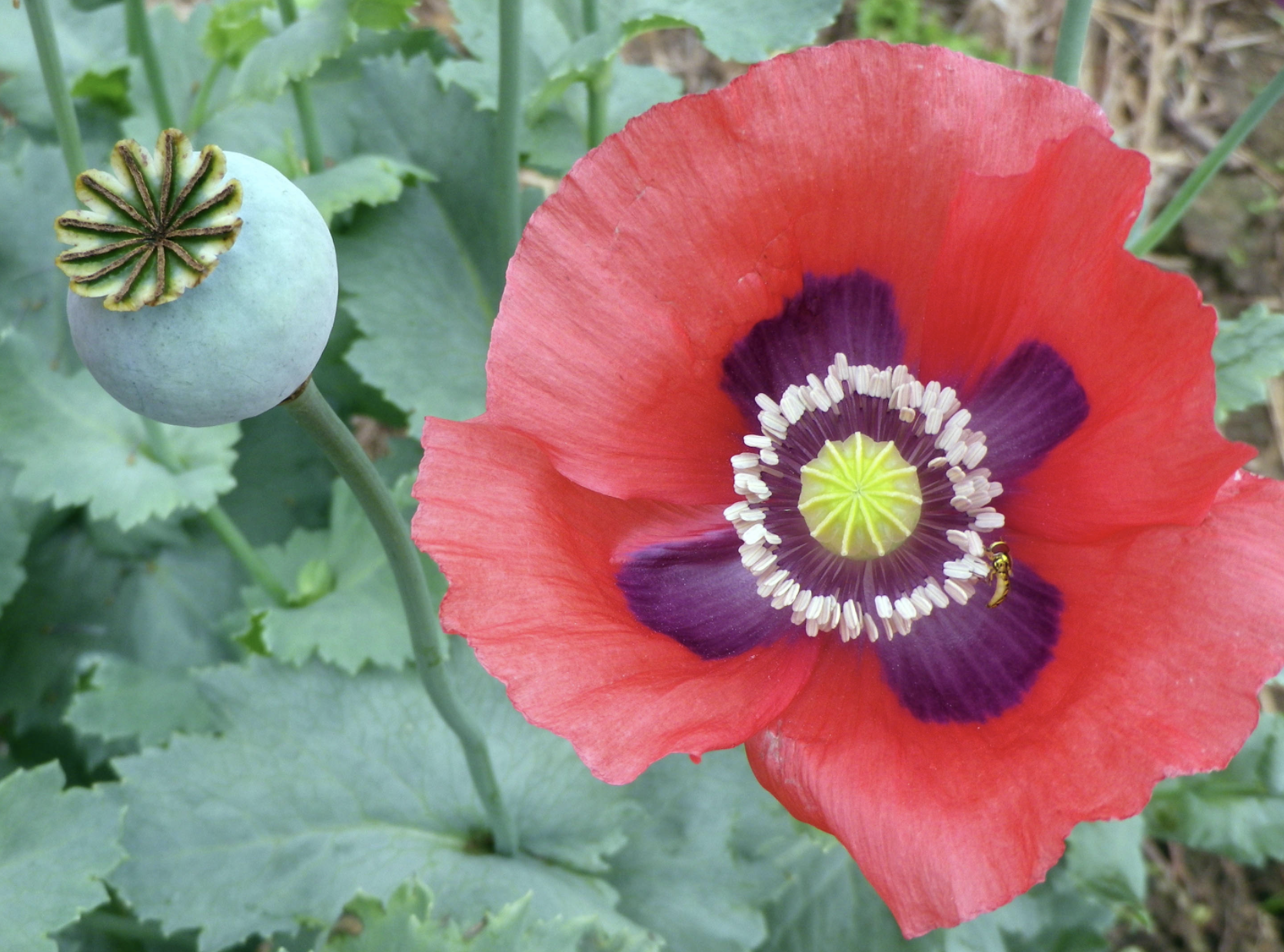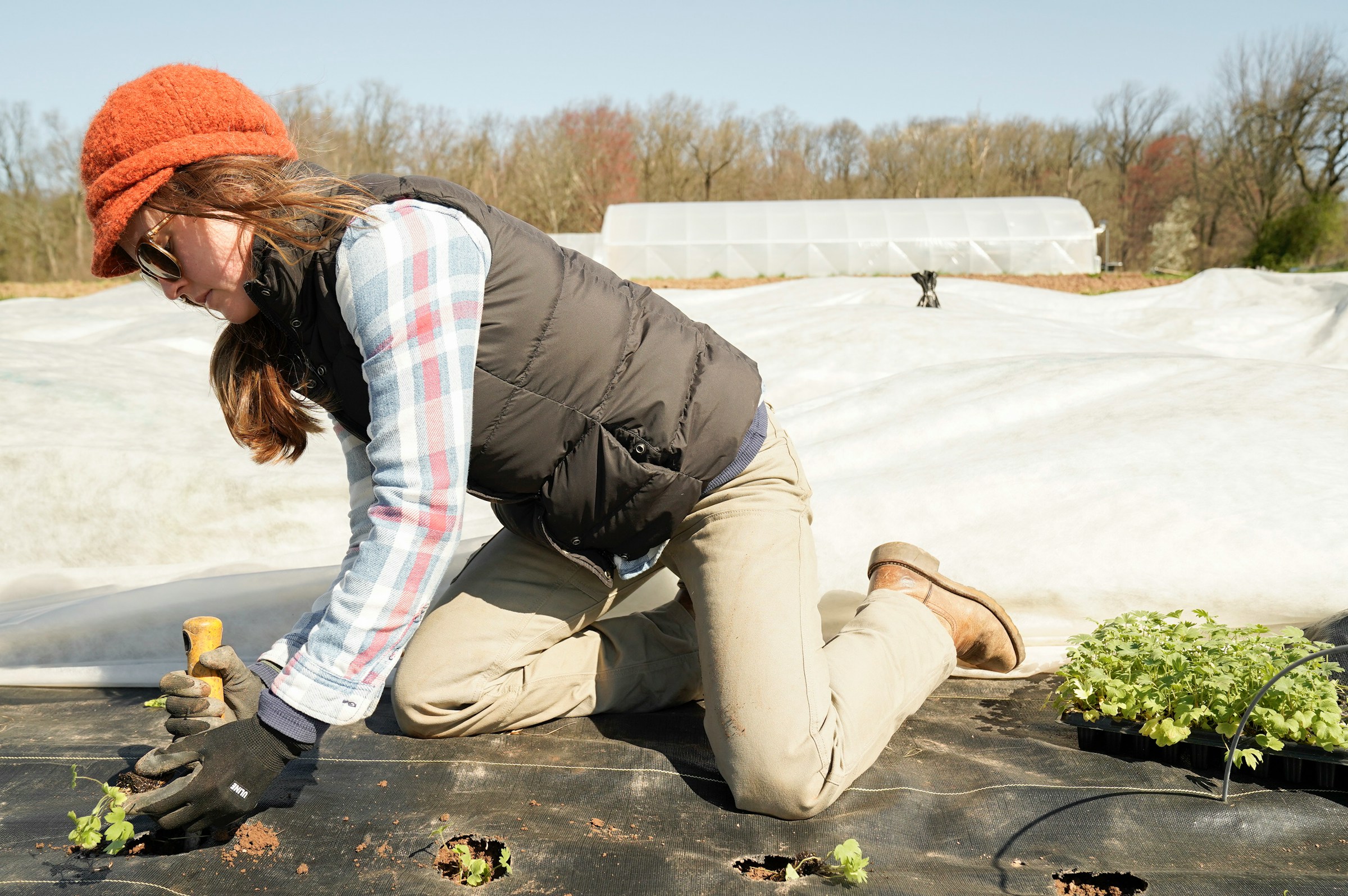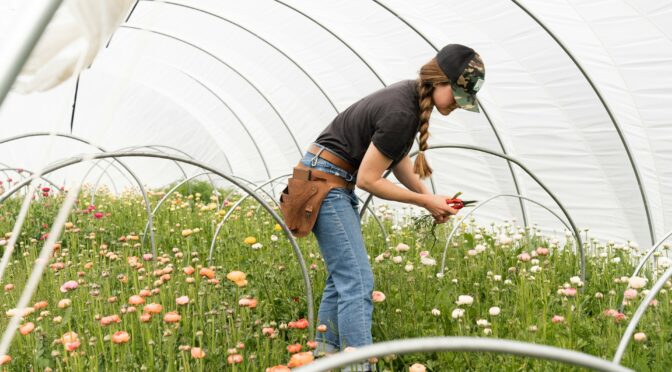There are few sights as beautiful as the first flowers of spring. For many, having early flowers is a dream come true. Thankfully, you can have flowers up to a month early by overwintering cool-season flower varieties. Whether you’re a cut flower farmer or just a home gardener, overwintering flowers can be a great way to get a jump on spring.
Overwintering isn’t quite the same as growing in the winter. Instead, we plant these flowers in the late summer or fall, depending on your zone. They will then grow for a few weeks or months before the cool temperatures and dwindling daylight halt their growth completely. In early spring, as the sunlight returns, flowers will take off again, having a significant advantage on spring sown seedlings.
What Flowers Can I Overwinter?
- Rudbeckia
- Sweet Peas
- Strawflower
- Larkspur (delphinium)
- Violas
- Dara
- Poppies
- Nigella
- Bachelor’s Buttons
Other flowers that we don’t carry that may overwinter include snapdragons, statice, ranunculus, campanula, foxglove, and dianthus.

Protection for Overwintered Flowers
Unfortunately, there is not one perfect setup for overwintering flowers. Your needs will depend on your climate, flower varieties, and of course budget.
In warm climates, using row cover and wire hoops is often enough to protect flowers in the field all winter long. However, in colder climates and mountainous areas, you’ll want to offer your plants a bit more protection. In these scenarios, a high tunnel is a great option. In northern areas, you can also pair a high tunnel with low tunnels and cover cloth to double your protection.
There are also a few flower seeds, like echinacea, which benefit from being direct sown in the fall and exposed to cold all winter long. These seeds need cold stratification, or a moist cold period, to break dormancy.
Planting Flowers for Overwintering
To prepare your beds, loosen the soil with a garden or broad fork and add finished compost. Avoid adding fertilizer. Fertilizer promotes foliar growth, and you want your plants to put their energy into their roots for winter.
Depending on your climate and crop, start your flowers between August and October. The goal is to give your flowers enough time to develop good roots before winter without letting them get too large. Large plants don’t overwinter as well as small plants and are more likely to suffer soft-tissue damage during hard freezes.
These cool-season flowers don’t germinate well in the hot weather of late summer and early fall, so you’ll need to start them indoors and transplant them out. Setting up lights in a basement or root cellar can be an excellent option for starting cool-season crops.
Transplant them into your tunnel when they have two to three sets of true leaves. Pinch back larger transplants. Once they’re transplanted, flowers will take about 4 to 6 weeks to put on good roots for winter.
It depends on the variety, but for cut flowers you can get away with close spacing. For overwintered flowers, we recommend 6 to 12 inches apart.
Maintaining Flowers Through the Winter and Spring
No matter what flowers you’re growing or what season extension you’re using, mulch is key. All the flowers we overwinter are cool-season flowers. They don’t appreciate the hot days of late summer and early fall we experience in much of the southeast. Mulch acts as insulation, helping keep the soil cool in the fall and keeping it warmer in the winter.
For cut flowers, we also like to use trellises or supports. These are critical for climbing flowers like sweet peas, but can also improve production for flowers like poppies by encouraging long straight stems and preventing lodging. For non-climbing flowers, creating a grid with mesh or wire fencing suspended parallel to the ground can be a great way to support the stems.
Plants will continue to grow through the fall until you reach about fewer than 9 hours of daylight. Make sure you cover your plants with low tunnels before temperatures dip below 32°F.
Watering is another important consideration. You should keep the soil moist but not saturated. During the winter when plants stop growing, the need for watering will slow down or even stop as plants stop growing, especially if you’re in an area where the ground freezes.
Watch carefully for growth to resume as the daylight lengthens and we get some warmer, sunny days in February or March. You will probably need to resume watering some during this time. You may also need to vent tunnels to prevent plants from overheating.
Throughout the winter, watch for humidity and disease issues. High tunnels and low tunnels are great for protecting crops, but they can also cause a buildup of humidity, which can contribute to disease issues. Vent your season extension as needed and remove any flowers that show signs of wilt or fungal diseases.
In March or April, you can remove the row cover from your plants.
Harvest
Most gardeners will find that this method gives them flowers at least a month earlier than normal. You should be able to harvest cut flowers between April and May.

